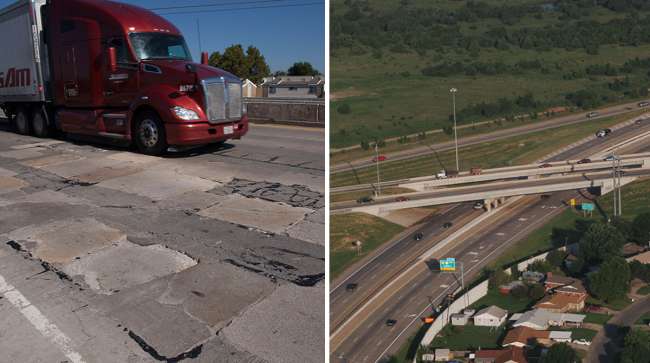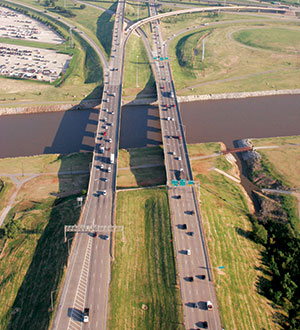Staff Reporter
Commission Approves Contracts for Oklahoma City Road Projects

[Stay on top of transportation news: Get TTNews in your inbox.]
The Oklahoma Transportation Commission recently approved contracts for two major infrastructure improvement projects in the Oklahoma City metropolitan area.
Commission members approved the contracts at their June 1 meeting. One of the projects will involve replacing six bridges along Interstate 40 in Del City, which is 6 miles east of downtown Oklahoma City. I-40 is a major east-west corridor that runs from Southern California to the North Carolina coast; it passes through the center of Oklahoma for 331 miles. The project, which is estimated to cost $80 million, is meant to address bridges that require frequent maintenance and repairs. According to the Oklahoma Department of Transportation, five are structurally deficient.
“Those bridges are some of the worst that we have on the interstate, and we are really looking forward to getting that project under construction and getting those bridges replaced with brand new infrastructure,” ODOT Executive Director Tim Gatz said at the meeting.

The I-44 bridge over the Oklahoma River will be rehabbed. (Oklahoma Department of Transportation)
The second project, which will cost about $28 million, will rehabilitate pavement and nine bridges on I-44 between I-40 and I-240 on the southwest side of Oklahoma City. Construction work will require lane closures on this busy route, which provides links to Will Rogers World Airport and distribution centers of many businesses. Gatz asked drivers to be mindful of work zones associated with the projects, both of which are scheduled to begin in late summer.
“These are both long-awaited projects that will greatly improve travel reliability on two critical interstate corridors in the Oklahoma City metro area that support commuter traffic as well as regional and national commerce,” ODOT spokesman Cody Boyd said.
Gatz expressed enthusiasm about the Gilcrease Expressway West project, for which the U.S. Department of Transportation recently issued a Transportation Infrastructure Finance and Innovation Act loan for up to $120.1 million. Rather than grants, the TIFIA program offers direct loans that support projects related to highways, bridges, intelligent transportation systems, freight facilities and transit.
READ MORE: DOT Issues TIFIA Loan for Oklahoma Expressway Project
The project, meant to relieve congestion in the Tulsa area, will involve creating a 5-mile divided toll highway. The new expressway will form a connection between I-44, a major freight corridor, and U.S. Route 412, which links Tennessee to New Mexico. The TIFIA loan will be paid back by gross toll revenue and supplemental funds from the Oklahoma Department of Transportation.

How can trucking companies adjust to ensure that essential freight keeps moving while protecting their workers from coronavirus? Host Seth Clevenger speaks with Lilli Chiu of Hub International and Dave Cox of Polaris Transportation. Hear a snippet, above, and get the full program by going to RoadSigns.TTNews.com.
“That’s something we’re very excited about,” Gatz said. “The Gilcrease itself is very important as a connector link, and it also exemplifies a partnership between the [Oklahoma] Turnpike Authority, the department, the Indian Nations Council of Governments, the city of Tulsa, Tulsa County and our federal partners.”
The commission, whose nine members were appointed by the governor, awards contracts for road and bridge construction projects every month. The commission’s meeting was held over videoconference in consideration of coronavirus-related safety guidelines. Gatz said department supervisors will continue to assess teleworking options as people gradually start returning to offices.
“We have really been very successful in our teleworking operations,” Gatz said. “Where we’ve been successful, we’re going to encourage the continuation of teleworking because it has been very helpful in flattening the curve in the department’s operations.”
Want more news? Listen to today's daily briefing:
Subscribe: Apple Podcasts | Spotify | Amazon Alexa | Google Assistant | More



